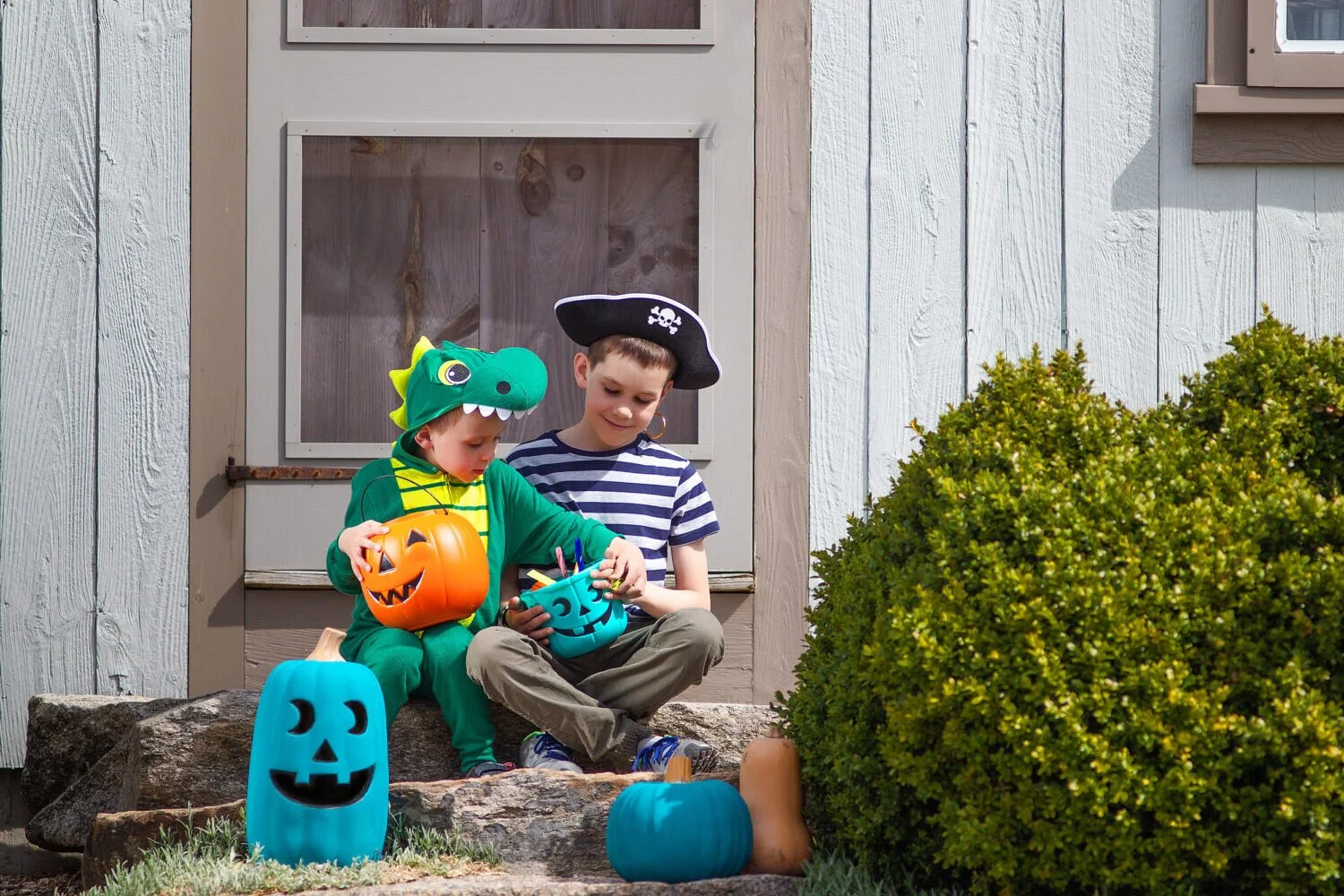Teal Pumpkin Project
Halloween is creeping up on us and so are the many BOO-tastic traditions that come with this time of year. Whether it’s picking out costumes, attending corn mazes and pumpkin patches, or planning your trick or treating route, chances are your kiddos are stoked for the non-stop fun this holiday offers.
During this time, it is important to remember that some families may alter their Halloween traditions to meet their children’s medical needs. One tradition that is of aid to these families is the Teal Pumpkin Project.
The Teal Pumpkin Project is an annual trick-or-treat campaign to support children during Halloween who are unable to eat the ‘normal candy’ options. Reasons behind this may be food allergies, intolerances, disabilities, or having alternate forms of nutrition such as tube feeding. Some important questions to consider this Halloween for the safety of both child and parents are:
1. WHAT FOOD ALLERGIES ARE A COMPONENT OF MOST COMMON CANDIES?
The six most common allergies in the United States are: peanuts, tree nuts, milk, wheat, soy, or eggs. If you check the wrappers on your/ your child’s favorite candy, chances are one of these ingredients are included. Some candies that include these ingredients are Snickers, Reese’s Peanut Butter Cups, Milky Ways, Paydays, Twix, Peanut M&M’s, and Kit Kats.
2. IS CROSS-CONTAMINATION A CONCERN FOR HALLOWEEN CANDIES?
Yes- bite-sized, fun-sized, standard, two-packs, or whatever the packaging of the item may be, different sizes of candy bars can be made in different facilities, which affects cross-contact risk. For example, a bite-sized candy may be made in a facility that also uses peanuts while the standard version comes from a peanut-free facility.
3. CAN I OFFER A DIFFERENT ITEM AT MY DOORSTEP BESIDES CANDY?
Yes, of course. Non-food items may include Glow Sticks, Bubbles, Spider Rings, Stickers, Silly Glasses, Vampire Fangs, Comic Books, Bookmarks, Erasers, and much more.
The goal of this project is to ultimately raise awareness by offering the option of non-food trinkets and toys in a separate bowl to make Halloween safer and more inclusive for all trick-or-treaters. Placing a teal pumpkin on your doorstep signals that, in addition to candy, you offer non-food trinkets and treats that are safe for all trick or treaters.
Another helpful resource you can take advantage of this Halloween is provided by FoodAllergy.org. They have provided a map of houses that are participating in the Teal Pumpkin Project. By clicking HERE, you can access a map of houses near you that will provide non-food items for your kiddos PLUS add your address to the map. This Halloween, help bring inclusiveness to your neighborhood by using a “Teal Pumpkin” on your doorstep!
To learn more about the Teal Pumpkin Project, please click HERE.
OUTSIDE SOURCES:
https://www.lisawoodruffnutrition.com/blog/teal-pumpkin-project


